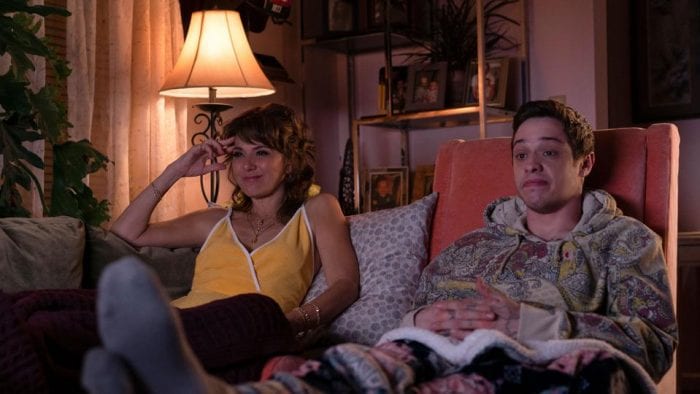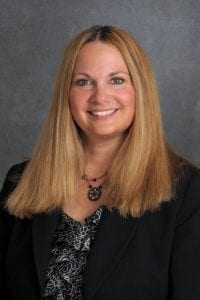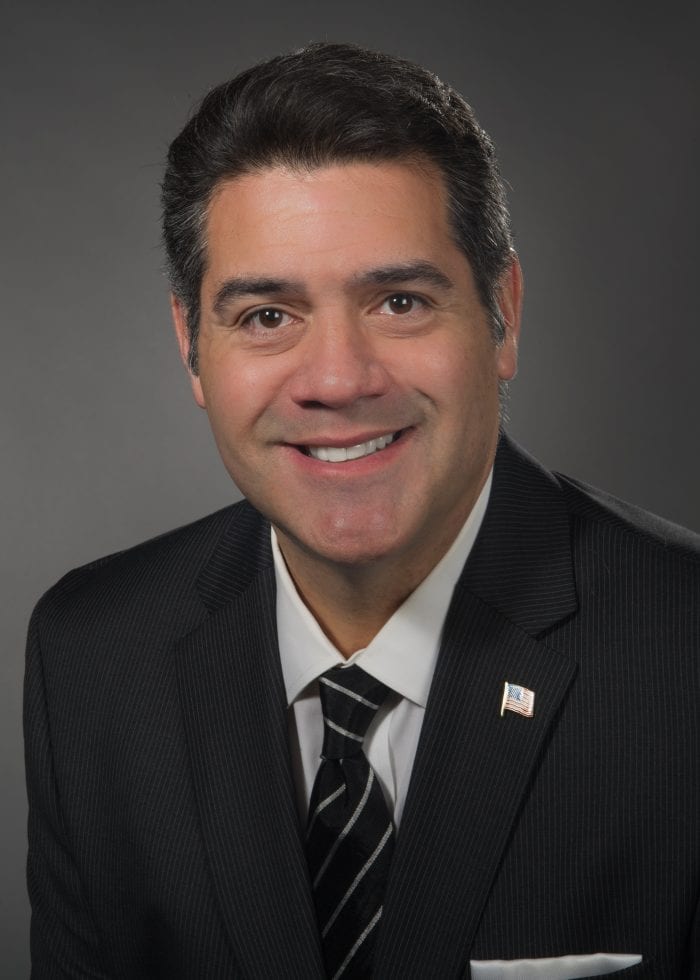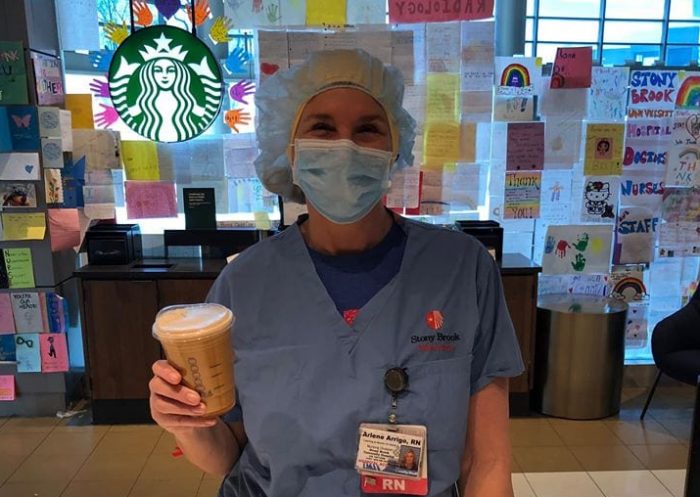Reviewed By Jeffrey Sanzel
Director-writer Judd Apatow’s work has been a string of off-beat films, including The 40-Year-Old Virgin, Knocked Up, Pineapple Express, and This Is 40. Some of these have been broader than others, with the majority being over-the-top comedies with heart-felt centers. His newest outing is The King of Staten Island, and it has a distinctly indie-vibe to it. Apatow has collaborated with Pete Davidson (who stars) and Dave Sirus to create the pensive, often funny, and frequently cringeworthy story of Scott Carlin (Davidson).
Scott is a twenty-four year-old whose life is going nowhere and not very quickly at that. Scott’s great dream is to open up a restaurant-tattoo parlor, an idea as off-kilter as he is. He spends his days getting high with a ragtag group of friends (Moisés Arias, Ricky Velez, and Lou Wilson — all three wonderful in their complete commitment to each other as well as their clear obliviousness to the world) and having sex with his not-quite girlfriend, Kelsey, who loves him but is frustrated by his inability to communicate.
As Kelsey, Bel Powley eschews caricature, bringing dimension to the devoted Staten Island girl, who is rough around the edges but with a charming inner clarity.

Scott’s sister Claire (delightful and no-nonsense Maude Apatow) heads off for college, leaving Scott alone in the house with their hard-working, widowed mother, Margie (Marisa Tomei). Margie’s husband was a fireman who died on the job seventeen years before, leaving her a single mother with two young children. She is a nurse working two jobs — school and emergency room — and has devoted her entire life to bringing up the two children: she has never dated let alone entertained a serious relationship, with a living room shrine to her late husband as the home’s focal point.
Tomei avoids cliché and shows Margie’s dawning realization that, with Claire gone, it is her chance to have her life back. While the focus of the film is Scott, Tomei draws us to Margie, who learns that while she is bruised she is not damaged. In the film’s turning point, she shows that she is nobody’s victim.
When Scott unwisely attempts to tattoo a nine-year-old boy, it brings the boy’s father, fireman Ray Bishop (Bill Burr, in a performance that grows throughout), into their lives. The abrasive Ray is at first appropriately enraged by Scott’s stupidity, but he trades ire for a softer approach as he is clearly drawn to Margie. They began secretly dating before eventually telling Scott, whose reaction is both childish and self-absorbed but unsurprisingly predictable.
It is here that the film and Scott begin to find their focus. The ensuing path follows struggles and revelations, both past and present, that allow Scott to slowly grow.
Steve Buscemi, as the fire chief, gives one his best and most unmannered portrayals in years; it is a subtle jewel of a performance, showing kindness and warmth underneath a slightly brash exterior. Pamela Adlon hits all the right sour notes as Ray’s bitter ex-wife. The supporting cast — especially the firefighters — are uniformly excellent.
This is a strange, awkward coming of age story, with Davidson’s sad sack accidentally finding the beginning of his road to adulthood in a not so much unlikely place but in an improbable way. His shift from his go-nowhere friends to the firefighters in Ray’s company might not be the most subtle narrative choice but it works.
The story is semi-autobiographical as Saturday Night Live veteran Davidson lost his father during the September 11th attacks. He has drawn on his own demons to create a memorable if marred version of himself. It is both raw and hilarious, often painful, and always honest. As an actor, Davidson makes every look and pause count.
Scott’s impulsive and awful decisions are made with wide-eyed recklessness, making this character both endearing and infuriating as he veers from one mistake directly into another. It is not until he looks beyond himself that he is able to open up to possibility. The final moments of the film are a gentle catharsis that speak volumes to the glimmer of change.
At almost two hours and twenty minutes, this is a film that is not in a rush to get to the end. It meanders, glancing around doorways and down streets, stopping to see what is happening, then strolling on. It hesitates and then briefly rushes forward before returning to its leisurely pace. This perfectly reflects the irregular course of Scott’s life. It is not a film of grand gestures but small movements. The King of Staten Island is a journey that takes its time but it is a journey worth taking.
Rated R, The King of Staten Island is available On Demand.


























